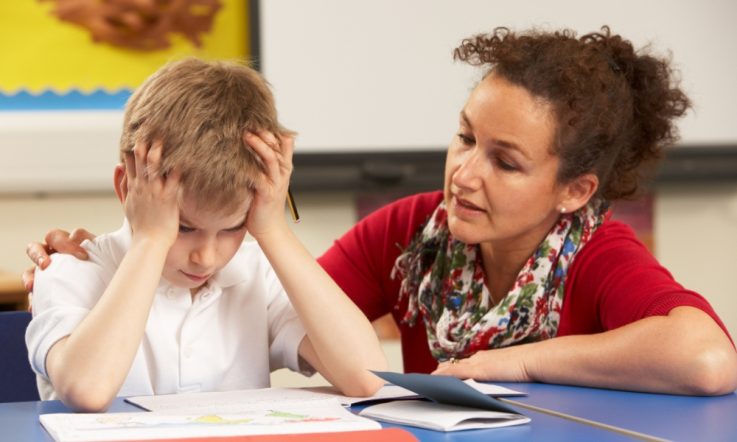Ever since Finland quietly emerged as a country which topped international comparative assessments in educational achievement and student outcomes, educators and policymakers around the world have been interested in this small Nordic country, hoping to find out the secret to their success (Tamkin, 2014).
A number of significant factors are well established: teaching is a high status profession in Finland; all teachers have a Masters degree; education is well funded by the state and free to all; school retention rates are high; and the country whose economic revival was led by companies such as Nokia had become a world leader in high level information technology applications, including in education.
A relatively small country of five million, Finland is situated in a unique geographic position at the edge of Europe, up against its massive neighbour to the east, Russia. Achieving independence in 1918 was a significant moment in Finnish history and an achievement that Finns still hold onto fiercely. Together with the unique Finnish language, this underpins their national character and has driven the social democratic welfare state that has since developed, which foregrounds equity and equality of opportunity for all Finns regardless of gender, socioeconomic, or regional status.
Education was seen as the key to achieving independence for Finland, as well as creating a civilised state founded on knowledge rather than ignorance, and preparing the country for a prosperous future and creating an egalitarian society. Contemporary commentators such as Michael Booth suggest this direct link between education and social welfare is still a salient feature; that in Finland ‘equality starts at the blackboard’ (Booth, 2014).
The basic right to education is enshrined in the Finnish constitution. Public authorities must secure equal opportunities for every resident in Finland to receive education and be able to develop themselves, irrespective of their financial standing.
Legislation provides for compulsory schooling and the right to free pre-primary and basic education, which includes, among other things, daily meals for students and subsidised transport.
Investigating school structure and culture
Thanks to an Endeavour Executive Fellowship from the Australian Government I was able to spend some time in Finland investigating its schools’ structure and culture as well as its teacher education programs and processes. I was particularly interested in the latter as I work in a university School of Education which educates and prepares teachers for the profession through undergraduate and postgraduate programs, and wanted to compare approaches.
From July to September 2014 I was based at the University of Eastern Finland at one of its three campuses in Savonlinna. Visiting schools, talking to teachers, principals, students, parents, university lecturers, student teachers and education bureaucrats was an informative experience, and I learned much about not only the Finnish education system, but the cultural, societal and historical factors on which this system is founded.
I found that relationships between students, teachers, parents and even educational administrators are based on trust, and that the wellbeing of children is central not only to schooling but to Finnish society and culture.
Historically teachers were seen as ‘candles of the people’, lighting the way to Finnish independence, and this is still a very strong cultural and societal view (Booth, 2014). Teaching is seen as a high status profession in Finland and was described by a number of people I spoke to as a ‘favourite occupation’.
It is therefore competitive to enter teacher education programs, requiring a high standard of university entry – based on a matriculation score as well as an entrance exam and an interview.
The salient feature of the university teacher education programs is their research-based approach, in which student teachers are taught to think critically and must complete a thesis in the three year Bachelor program, then another thesis in the two year Masters program.
Teachers and schools are afforded a great amount of independence from bureaucracy and centralised control. There is a kind of collective compliance based on self-evaluation and self-referential assessment. High stakes testing such as the Australian NAPLAN scheme is not mandated and international comparative tests such as PISA are voluntary. Schools can opt to engage in them for benchmarking against other schools, but this does not result in publically available ‘leagues tables’ such as those associated with the MySchool website information required of Australian schools.
Finnish children attend kindergarten and pre-school until the age of seven, when they enter comprehensive school, which covers Grades 1 to 9; therefore they are at least a year older than Australian children when they start school.
Senior high schools are separate institutions offering Grades 10, 11 and 12 for students who are usually around 16-years-old when they transition into high school. This transition could involve moving from home to attend high school, particularly for one of the many specialist high schools that offer programs in music, art and dance. A 16-year-old Finnish high school student could therefore be living independently while studying, supported by a living allowance from the state.
Behaviour management
In all the schools I visited, behaviour management did not appear to be an issue – teachers were addressed by their first name and the relationship between student and teacher appears to be much closer than the more formal approach adopted in many countries.
A significant factor in developing and maintaining this relationship is the daily school lunch, where students and teachers eat together in the school canteen. I observed this in every school, even the kindergartens, since I was always invited to partake in lunch.
I firmly believe that the simple act of eating and socialising together every day has a number of significant educational benefits: the children learn appropriate social manners and rituals related to eating and putting away their dishes; they have a healthy and nutritious meal every day (and I believe this is linked to improved behaviours); they learn to mix freely and socially with each other as well as teaching staff and other adults; teachers can observe social behaviours and peer groupings and whether particular children are eating alone or not mixing with their peers; and parents do not have to worry about packing school lunches!
Taking regular breaks
Another feature of the Finnish school is the way the school day is structured, again centred on the wellbeing of the whole child. In the Comprehensive Schools, the first lesson generally starts at 8.30 in the morning and goes for 45 minutes. The children are then given a 15 minute break and inevitably will go outside into the school yard and play – even in winter when the weather can be snowing and well into the minus degrees Celsius. This pattern is repeated throughout the day – a lesson, then a break, a lesson, then a break.
There is a Finnish word for this 15 minute break time – vӓlitunti. The word has more than one meaning, and can be translated as ‘the best time’ and also ‘a lecture between’, or in effect a ‘gap lesson’. Vӓlitunti can therefore be seen as not just random playtime but a key part of the pedagogical approach.
The school day itself is not that long, usually finishing by 2pm, so that ‘hothousing’ or cramming content through accelerated intensive study and hours of homework is certainly not one of the secrets to Finnish educational success – quite the opposite in fact. It was described to me as ‘unhurried working’; giving each child time to grow and learn according to their needs, with healthy living, healthy food, sport, culture, art and creativity being valued more highly than homework.
The Finnish Education System therefore can be characterised by trust, freedom, flexibility and a concern to put the wellbeing of children at the forefront, with teachers contributing to a supportive and close relationship with their students balanced with delivering appropriate content and providing a high standard of academic direction in an equitable manner.
References
Booth, M. (2014)The almost nearly perfect people: The truth about the Nordic miracle, Jonathan Cape: London
Tamkin, E. (2014). Will everyone shut up already about how the Nordic countries top every global ranking? Slate. 29 August 2014. Retrieved from http://www.slate.com/blogs/the_world_/2014/08/29/will_everyone_shut_up_already_about_how_the_nordic_countries_top_every_global.html
Have you embarked on a professional learning trip?
What did you learn from the experience?
How did it impact on your practice?



